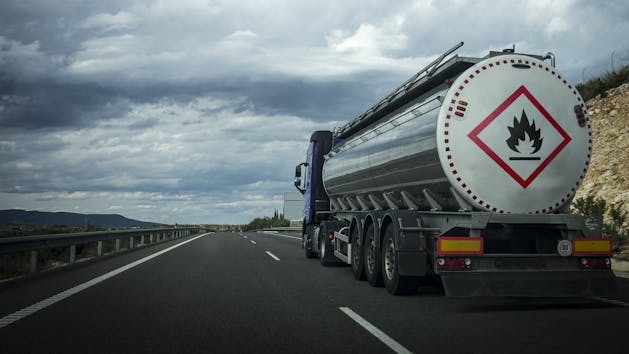Find the right solution for your business with our free Fleet Management Buyer’s Guide.
Why Are Metrics So Important to Your Fleet Safety Program?
Measuring fleet safety can seem more art than science. How do you know your fleet is safe? Is it merely the absence of accidents? Is it just a gut feeling that your guys are safety conscious? Or is your fleet right on the edge of a catastrophe ... an accident waiting to happen?
While it’s true that some fleets have avoided accidents simply due to luck rather than a carefully managed safety plan, there are ways to chart how well you’re doing using some verified metrics.
Why are metrics so important for fleet safety?
While not diminishing the value of experience, good businesses are not run on gut feelings. There’s an old saying that underscores this: paralysis by analysis and extinction by instinct.
So even if you think you know your business back to front and inside out, there is significant value in backing that up with hard safety data. Why?
Know what areas of your business to focus on - Statistics (broken down by division or crew) can quickly lead you to weaknesses, either with your processes, management or specific drivers. Convince leadership of the need to allocate resources - Sometimes an impassioned speech is not enough to convince a reallocation of the company’s budget to initiatives to boost safety standards. Use actual data and hard numbers to not only highlight the need but outline the cost-benefit of investing in safety. Identify trends - Fleet safety managers may come and go, and without consistent reporting you will never really know if safety standards are improving, staying the same or getting worse. Standard reports and trends can help you visualize progress, either in specific areas, such as unsafe driving behaviors or reversing accidents, or overall as an organization.
[Tweet "Safety data helps fleets in 3 ways: Know where to focus, get resources allocated and..."]
That’s not to say your experience won’t play an important part in improving fleet safety - it will help you to interpret the data correctly and identify the best solution to the problem.
What are some fleet safety metrics?
Whatever metrics you use, the key is to be consistent and keep your results as objective as possible. Changing how you measure safety partway through can reduce the quality of your report data - of course if you’re measuring the wrong thing that’s no excuse - bite the bullet and make the change!
Measuring fleet safety can borrow from existing bodies of research, such as transport research. Groups like ATRI (American Transport Research Institute) spend a lot of time preparing reports for the trucking industry on issues relating to general road safety. You can improve your understanding of the key metrics by reviewing their research and reports on the subject of driver safety. Here are some common fleet safety metrics used:
Vehicle Crash Rate (crash frequency)
A fundamental fleet safety metric, vehicle crash rate is determined by multiplying the number of vehicle crashes incurred over the previous 12 months by 1,000,000, then dividing the total vehicle miles traveled over the previous 12 months:
# of vehicle crashes previous 12 months x 1,000,000
Total fleet miles traveled previous 12 months
Vehicle crash rate is a measure of crash frequency, and an important indication of overall fleet behavior. Fleets should also consider tracking and trending vehicle crashes by type (e.g. backing, rear-end, side-swipe, etc.), time of day and day of week, in addition to capturing a variety of other crash detail.
Tracking and trending vehicle crash data helps identify possible areas of operation in need of improvement such as driver orientation, training, routing or scheduling and where to allocate available resources.
Total Cost of Vehicle Crashes & Average Cost of a Vehicle Crash (crash severity)
Whether it’s a fleet of passenger cars, pickup trucks, vans or tractor-trailers, and regardless of whether the organization operates 20 or 20,000 vehicles, measuring the true cost of a vehicle crash and average cost per crash, is a critical function of any safety program.
Vehicle crashes have obvious, direct costs such as vehicle, property and cargo damage. If the accident involves an injury, add the cost of medical, hospitalization and rehabilitation expenses, workers compensation payments, and the potential for higher insurance premiums. But accidents have less obvious, indirect costs that are not reimbursed by insurance. These include various operational disruptions, unaccounted for administrative time, loss of productivity and even a decrease in employee morale.
Negative Road Observations (NRO)
From time to time, a fleet may receive feedback from members of the public, industry partners or internal team members, complaining about unsafe or aggressive driving behavior. Some fleets actively collect external feedback through the use of ‘How’s my driving?’ stickers that include a number to call.
While the benefit of the doubt should be given to the driver, it’s a good practice to document it regardless. If a pattern (more than one report over time regarding the same driver) emerges, corrective action should be undertaken. NROs can be verified with supporting data from solutions.
Positive Road Observations (PRO)
The opposite of NROs, PROs are favorable feedback on a driver’s behavior, from either within the company or from members of the public. PROs should be recorded with the associated driver being recognized for their safe and professional driving.
When you’ve identified the metrics you’ll use, the next step is to think about how you will collect this data, and how you’ll report it.
How do I collect fleet safety data?
Aside from manual data collection methods (noting incidents in a log book, or recording them in a spreadsheet), fleets are looking for automated ways to record safety metrics to save time and scale efficiently, particularly as the business grows.
DFDs (Driver Feedback Devices) are real-time driver monitoring solutions that can cover both NROs and PROs, corroborating outside feedback. The data is automatically collected and sorted into specific behaviors including harsh braking, acceleration and speeding. This data can be shown as a web-based dashboard or provided to drivers to help them self-train and compete for safe driving rewards.
Lagging or leading? Historical crash data (such as crash frequency and severity) are known as lagging safety indicators.
Need help with improving fleet safety?
If you feel like something’s not quite right with the safety of your fleet but you have no idea where to start then talk to us.
We have more than a decade of experience helping fleets keep drivers and mobile workers safe, and achieving massive improvements in safety metrics, like one large company that saw a 73% reduction in excessive speeding incidents across a fleet of 8,000 vehicles within 30 days (and it stayed down).
Find out how our platform gives you the visibility you need to get more done.




